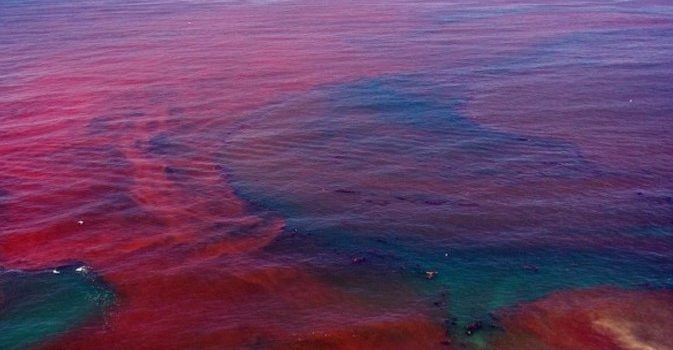
Fighting against red tide

Imagine you’re taking a vacation on the shores of Tampa Bay for the summer. But instead of clear blue waters, you are faced with red, murky depths. You might even see dead fish bobbing to the surface and washing up onto shore! While this sight may be alarming, a bit of background information can teach you what happens in the Florida waters each summer and how to stay safe.
Harmful algae blooms (HABs) occur when algae negatively impact the marine environment and the living things within it. Toxic algae blooms pose health risks to all living things, while non-toxic algae can grow too quickly and take over an ecosystem, creating what’s known as a red tide.
Toxic algae blooms can hurt or kill fish, marine mammals, and birds. These toxins are also bad for humans, as direct exposure to toxic algae or the consumption of toxic shellfish can cause horrible and potentially fatal illnesses. The air surrounding these HABs can also become toxic, leading to breathing issues. NOAA estimates that toxic algae blooms account for a loss of $82 million in United States tourist industries. After all, who would want to vacation somewhere so dangerous?
Nontoxic algae blooms can also be disastrous. An overabundance of nontoxic algal blooms can cause dead zones, or places in the water with little to no dissolved oxygen. This happens because as algae decomposes, it uses up oxygen, depleting the supply available for marine life under the water. This can kill or drive away fish and other water-breathing creatures, since they need oxygen to survive. Too many algal blooms can also block light from reaching underwater organisms, such as seagrass. HABs decrease the yields of recreational and commercial fishing. Additionally, they can increase the cost of treating drinking water and cleaning up polluted bodies of water.
Algae can become overabundant naturally, and HABs occur in virtually every coastal state. One of the most well-known HABs occurs in Florida’s Gulf Coast nearly every summer and has been documented since the 1840s. However, human impacts like nutrient pollution and climate change can increase the frequency and severity of these events, since algae thrives in warm, nutrient-rich water.
Luckily, there are ways to reduce the impact of HABs. Cleaning rivers and coastlines of excess nutrients and runoff can help reduce their occurrence, and the reintroduction of wetlands will naturally clean up the water. NOAA has put considerable effort into studying the blooms to determine what areas are at risk and how they can be protected. Much of this research can be found here. During HAB events, NOAA also releases twice-weekly forecasts to enable people to make informed choices on how to stay safe. For more information and to subscribe to these forecasts, click here.
Isabel Schnaidt is a communications intern with Restore America’s Estuaries.
